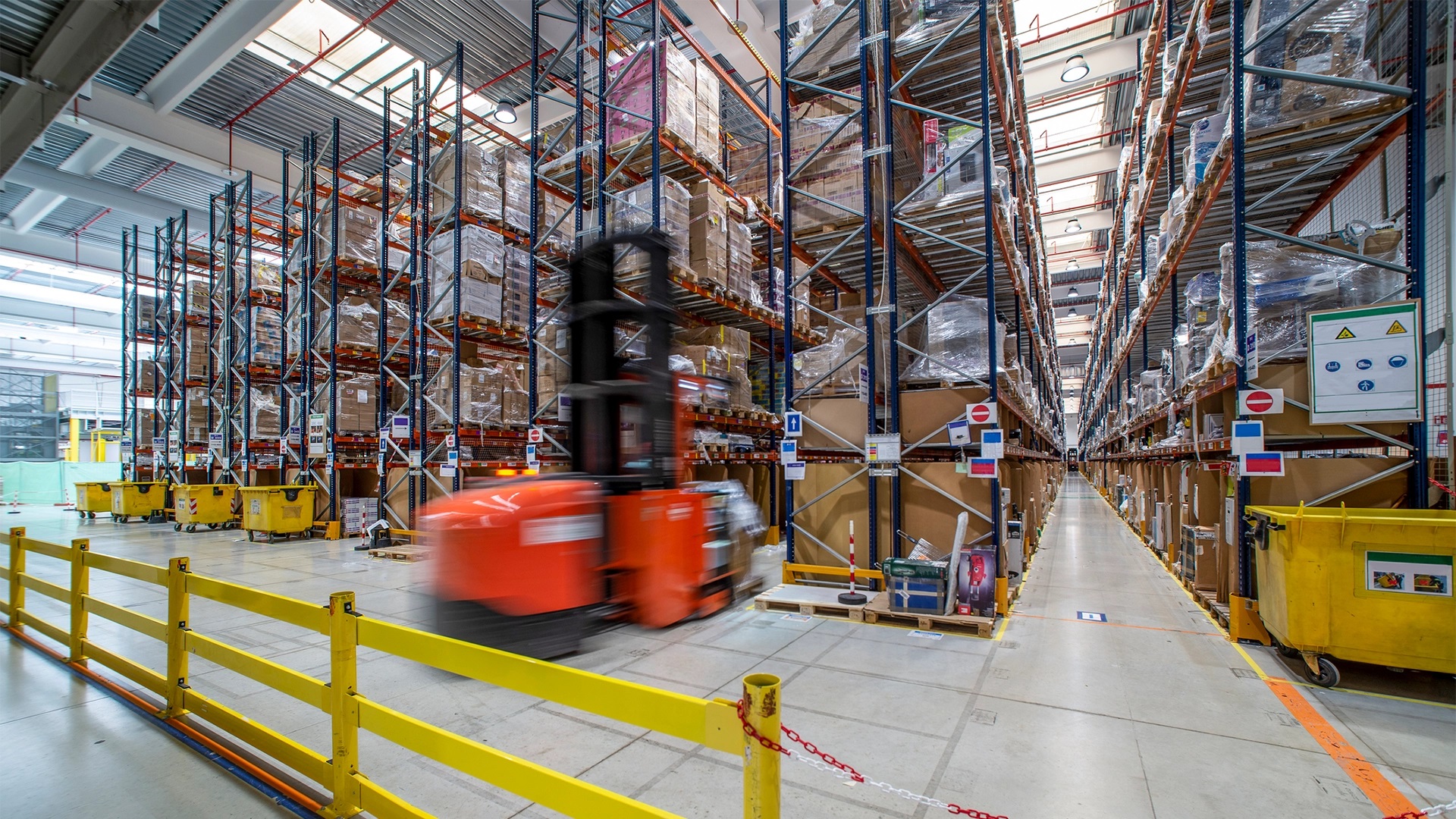Amazon is one of the most powerful sales platforms available around the world. It lists thousands of sellers, has millions of products added to its database, and can really help small businesses find their footing and grow, provided that they’re able to get to grips with Amazon’s ecosystem. That means understanding the logistic side of things, the marketing side of things, and the storefront side of things – and while it seems complicated, it all boils down to two critical components.
PPC, or pay-per-click, and logistics.
PPC and logistics stand on their own as the most fundamental aspects of running a successful storefront, however a lot of what benefits one feeds into benefits for the other.
Here’s how to create, and use, a successful PPC strategy on Amazon using the logistics side of things.
What is PPC?
PPC, or pay-per-click, is basically how you advertise: it’s the ads that will bring people to your storefront, and the ads that will push those customers to click ‘buy now’ on one of your listings. Amazon’s current active users stand somewhere around 300 million – that’s a lot of eyes, and a lot of income, you can tap into through PPC.
What PPC does is make sure that a portion of those eyes are on your products. Usually, this happens through the use of keywords, and it works based on how much you pay to push that listing to the front.
Say, for example, you sell pens.
You want your pens to be the top-seller on Amazon. The number one position could be out of your budget, but provided that you’re on the first page, you’re happy with the results.
To start, you need to find a set of keywords that you want to push for – let’s use ‘blue pens’ as an example. When you create your PPC campaign, you can bid on those keywords, and push your product to the front of the listing so that potential customers looking for blue pens will see your ad. Clicking on that ad will push that client to purchase, and if they do, then you owe Amazon a portion of the profit for the click that led to a purchase.
Hence, pay per click! The price you pay for this advertising is going to vary: some keywords are more competitive than others, so the payout will be higher, and could prove too costly for the profit that you’ll make at the end of it.
Why is PPC important for Amazon sellers?
Theoretically, you can rank without involving pay-per-click, but it won’t be easy. The Amazon marketplace is a highly competitive location, and with every seller bidding on and winning the opportunity to rank for a particular keyword, pay-per-click and pay-to-play advertising is key if you want to improve your Amazon listings and to actually make a business selling things on the marketplace.
Pay-per-click fulfils two important roles:
- It improves and builds up your organic ranking.
This is because the PPC campaign will elevate the product’s visibility to your buyers. As more and more buyers purchase from you, it shows Amazon’s algorithm that the product you’re selling is important, and therefore it will rank your product higher. This means the product is more visible, and therefore you’ll get more traffic to your storefront, and more sales at the end of it, and more profit to work with. - It drives traffic to your listings.
If you have a listing in a highly competitive field, ranking high organically is nearly impossible at first. PPC gives you a little rankings boost that will push your listings higher, and make it easier for potential buyers to see your storefront and your listings.
What does PPC have to do with logistics?
A good Amazon seller understands the golden rule of ranking high on Amazon: logistics is everything. Logistics means having enough stock to fit demand. Logistics means planning ahead for massive sales events such as Prime Day, the holiday season, or other high traffic shopping periods. Logistics is the key to maintaining a successful relationship between how much you spend on products and the profit that you make off those products.
As we’ve mentioned in ‘Don’t run out of stock in Q4’, selling out of stock on Amazon can negatively impact your seller ranking. If you have too much stock, if you have not enough stock, if you’ve sold out and can’t replenish your stock in time: all of these are going to drop your seller ranking lower and lower, and getting back up in the listings will take time.
A successful PPC campaign combined with an excellent understanding of your supply chain, on the other hand, can help you make sure that you won’t run into these problems.
Here’s how it works.
1.Plan your bids according to your inventory levels.
When strategizing your PPC campaign, it’s important to know your numbers first. How much inventory do you have to support your intended campaign? What is your revenue goal? After analyzing these two factors, you can use your inventory levels and replenishing speed to calculate how much you can actually manage to sell per month.
Let’s look at an example:
Say you have 500 units at Amazon and it takes you 45 days to ship products from overseas. You would only be able to sell up to 150 units a month to comfortably match your supply chain and stay in stock. If your sale price is $30, selling through 150 units would be $4,500 in revenue. Knowing what you can actually afford to sell in terms of units and the revenue that would bring allows you to have a better idea of what you can reasonably spend on PPC per month. In this case we estimate $2000-$3000 to stay on track.
2.Keyword research is fundamental to the success of your PPC campaign.
A lot of customers already have an idea of what they’re looking for, and so understanding that idea is step one of creating a successful PPC campaign. To use the blue pens example from earlier, if you already know the kind of customer that you want to target, your research is going to specifically focus on what combination of keywords that potential customer could write. This could be things like ‘school pens’ or ‘pens for work’ or ‘blue pens’ or ‘blue biros’ – the world of keyword research is vast and endless, and there’s multiple options that you can take a look at that will make a big difference to the kind of customers you can attract to your listing.
3.When your listing goes active, you enter the honeymoon phase.
Every new listing is going to go through a period of growth, and that’s going to determine how you can scale up your business. The honeymoon phase is where your small business is going to take off, so make sure your listing remains active, monitor your PPC campaign carefully, and make adjustments if you need to. It’s especially important to remember that the honeymoon phase will kick in with the first sale, so if your stock isn’t there yet, hold off on launching.
4.Constantly monitor and adjust your PPC strategy.
Ads are easy to ignore if you’re not shopping for that particular product, and you don’t want to be the product that your customer isn’t shopping for – so make sure to keep an eye on how your campaign is performing. Test out and refine your product listings using different keywords, different images, and different copy: the results can vary so significantly that you might make a permanent change.
5.Keep an eye on your inventory.
We’ve mentioned this before, but it’s worth mentioning it again: a PPC campaign is going to drive customers to your storefront or your listing. It’s important that they have the product ready to purchase, and that you’re not at risk of running out of product, so definitely make sure that your inventory is in place before you embark on a PPC campaign. There’s nothing more irritating, and more damaging to an Amazon seller’s reputation, than running out of stock.
I’ve run out of stock! What do I do now?
A one-month buffer of product is important, but if the unthinkable happens and you run out of stock regardless, don’t panic: your PPC campaign can help you build your reputation back up.
The first step you have to take is the step no Amazon seller wants to take – close your listing. The reason for it is easy: if there’s no listing, then Amazon won’t penalise you for running out of stock, and your existing campaign won’t drive customers to a listing that they can’t purchase from. If you want to be 100% sure that your listing is no longer online, scale up the price significantly, and Amazon will suppress it naturally.
After you’re back in stock, it’s time to boost your PPC efforts – this might mean spending a little more on keywords, or spending a little more for ad spend for a short period of time. At this stage, you will be losing money, and that’s expected. This exercise isn’t to make profit, it’s to make sure that your listing regains the momentum it had before you ran out of stock.
Once your listing is back up, you can reduce your ad spend to what it was before, and work on refining your logistics so that you don’t run out of stock again.
Is there an easier way to make sure you never run out of stock?
You can fully outsource your logistics to a third party service provider, and let someone else handle the hassle for you – it’s a task that 3PL companies like us will know inside and out. As former Amazon sellers, part of the reason why we focus so much on streamlining and end-end service door to door logistics is because we understand how important it is to get your inventory in order before you ever even make a sale.
And there you have it: a foolproof formula for combining logistics and PPC to create a bullet-proof Amazon sales strategy that will see your business grow. If you’ve got more questions, or you’re still curious about what else you can do with logistics, talk to us today. We were Amazon sellers for years – and we know the ins and outs of this business well.










